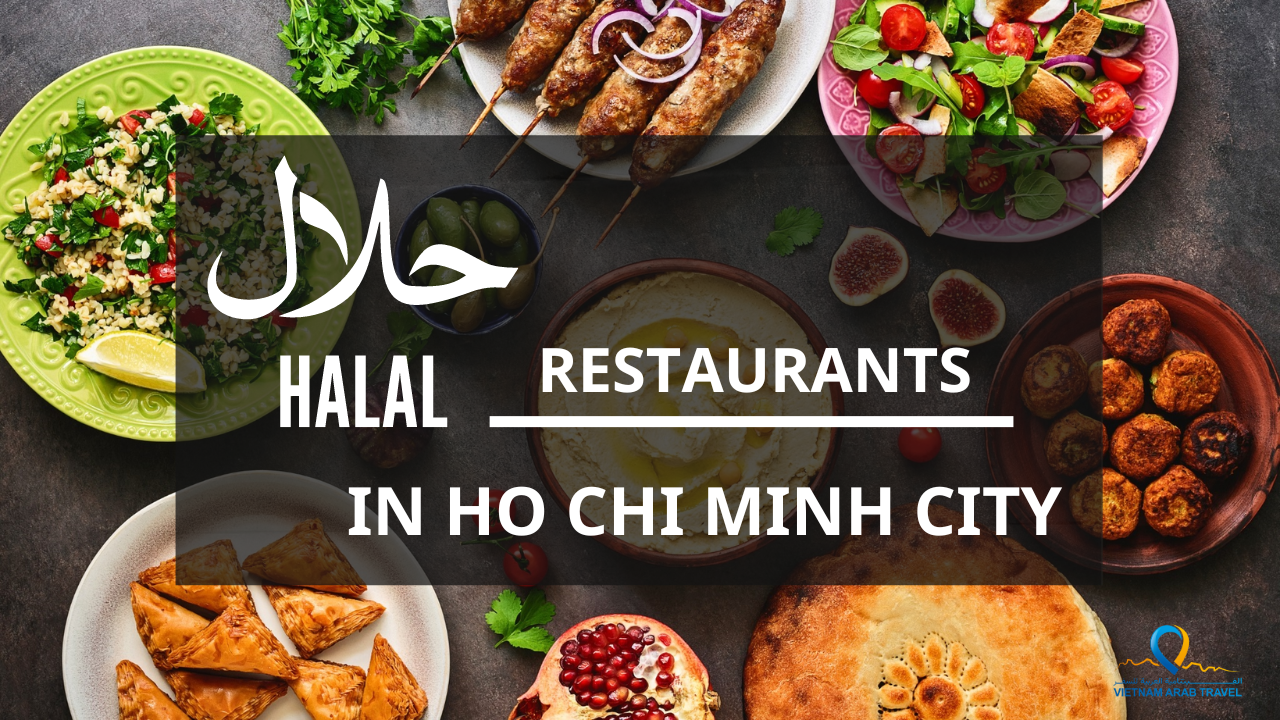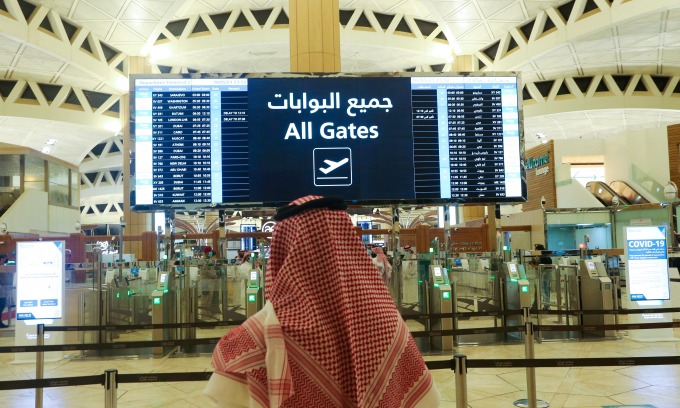Vietnamese Wedding Ceremony Tradition
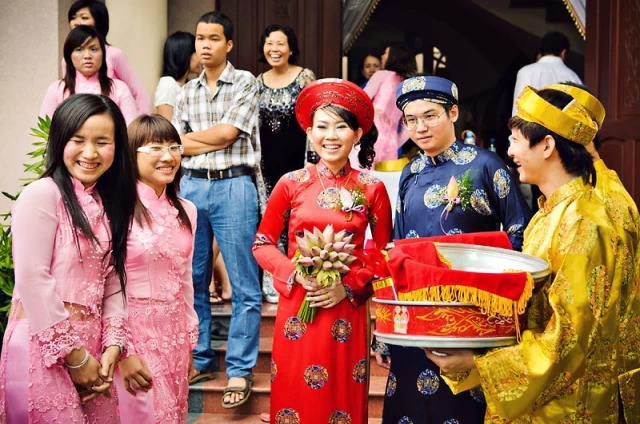
Depending on habits of specific ethnic groups, marriage includes various steps and related procedures, but in general, there are two main small ceremonies in a whole Vietnamese wedding ceremony:
1. Le An Hoi (Betrothal Ceremony)
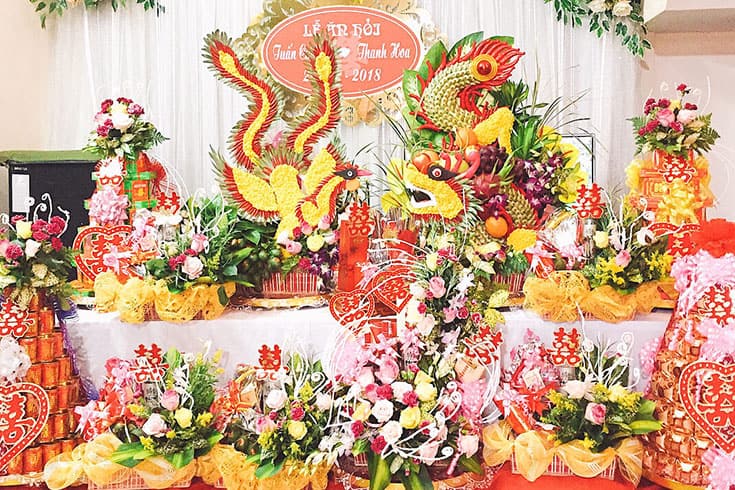
Normally, both bride and groom or their parents go to the fortuneteller to see what date and time is best for them. They strongly believe in this date and time so the groom’s family and relatives must come on time.
Some days before the wedding, they will visit the bride and her family with round lacquered boxes known as betrothal presents. It composes of areca nuts and betel leaves, tea, cake, fruits, wines and other delicacies which covered with red cloth and carried by unmarried girls or boys.
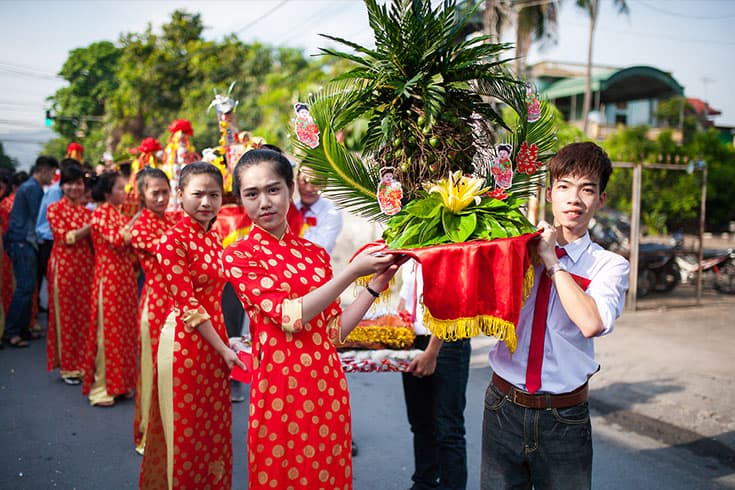
2. Le Cuoi (Wedding Ceremony)
On the wedding day, the groom’s family and relatives go to the bride’s house bringing a lot of gifts wrapped in red papers. These gifts are similar to those of the engagement: betel leaves and areca nuts, wines, fruits, cakes, tea … The persons hold these trays are also carefully chosen, usually they are happily married couples.
Ladies and women are all dressed in Ao Dai. Men could be in their suits or men traditional Ao Dai. The troop is usually led by a couple that is most wealthy and successful among the relatives, this means to wish the to-be-wed couples a blessing life together in the future.
The groom’s family would stop in front of the bride’s house. The leading couple should enter the house first with a tray with wine. They would invite the bride’s parents to take a sip. By accepting the toast, the bride’s family agrees for the groom’s family to enter their house. The firework is immediately fired to greet the groom’s family.
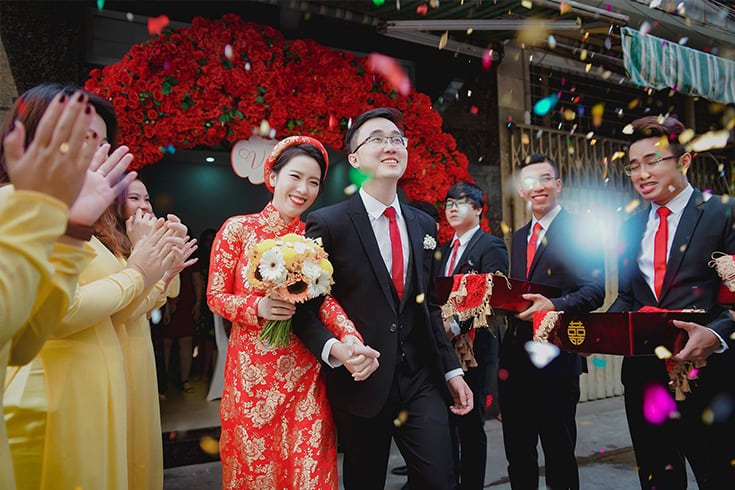
The groom’s family would introduce themselves and ask permission for their son to marry his bride. The master of the ceremony (usually a respected person among the bride’s relatives) instructs the bride’s parents to present their daughter. The bride then follows her parents out. She will wear red traditional wedding ao dai, followed by her bride maids. The couple should pray before the altar ask their ancestors for permission for their marriage, then express their gratitude to both groom’s and bride’s parents for raising and protecting them.
Then, they bow their head to each other to show their gratitude and respect toward their soon-to-be husband or wife. The master of the ceremony would gave the wedding couple advices on starting a new family. Their parents would take turn to share their experience and give blessing. After that, the groom and the bride exchange their wedding rings and receive the gifts from their parents such as golden bracelets, ear rings, necklace… The ceremony is ended with a round applause.
After the wedding ceremony is over, there will be a party at the groom’s house. Some traditional Vietnamese wedding party is celebrated at their houses (usually in country-side); other is celebrated in the restaurant. This day is the culmination of desires, day dreams, hopes and anxieties. There is a band to play music during their meal. Some guests are free to sing related wedding songs on the stage to luck the bride and the groom. In the middle of the party, the couple goes to each table to get wishes, congratulations as well as money.
Today, a lot of Vietnamese couples have their wedding ceremony done in Temples or Churches which is very much similar to American and Western style, including exchanging vows and wedding rings. However, they still maintain Vietnamese traditional ceremony in the bride’s home before heading to temples or churches.
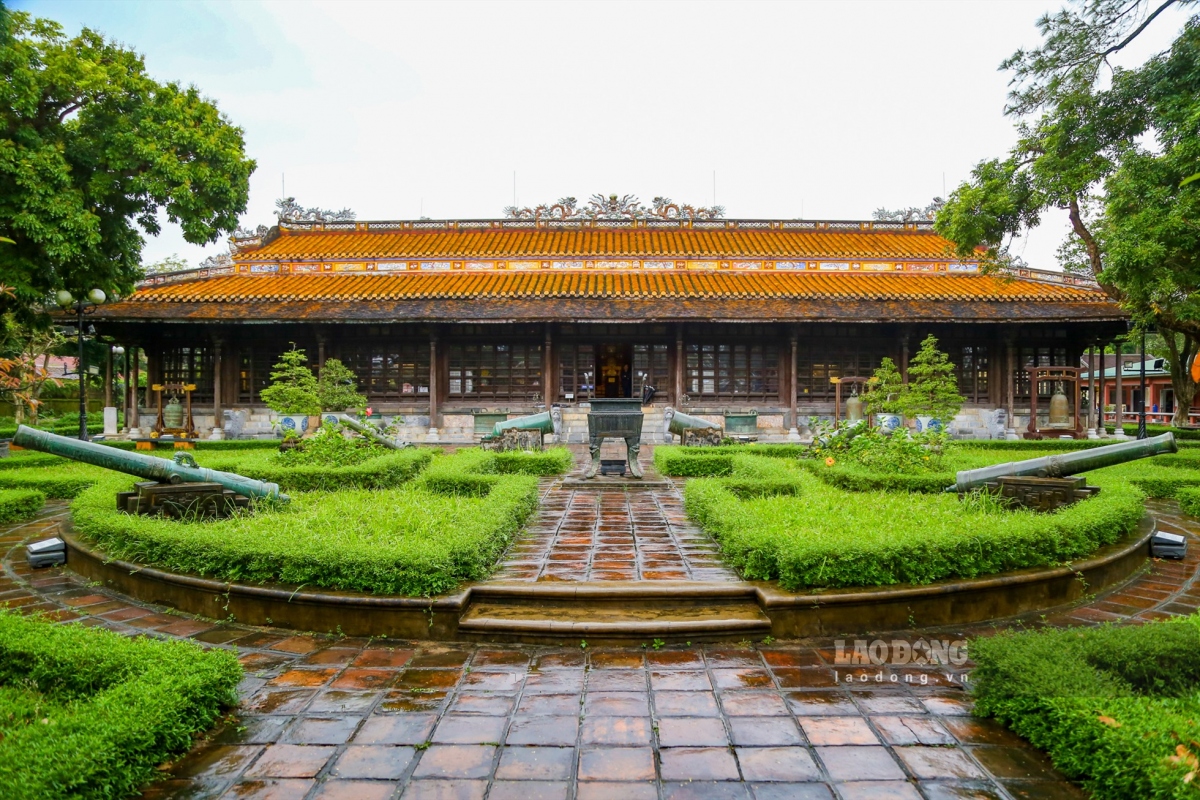


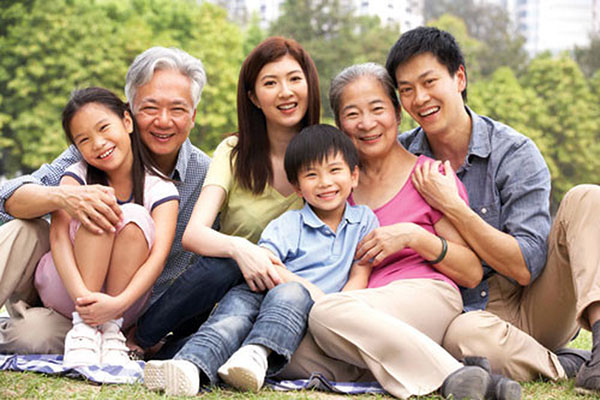
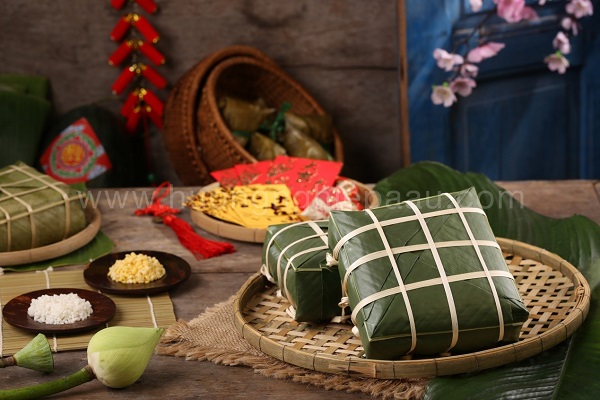
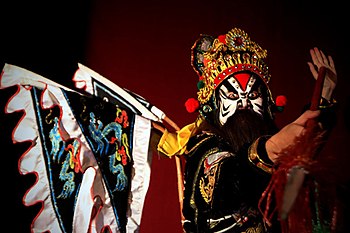
.png)
